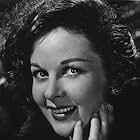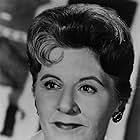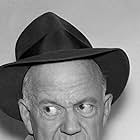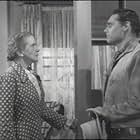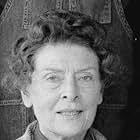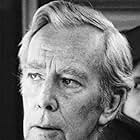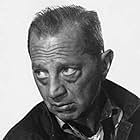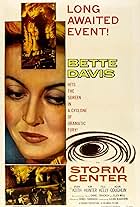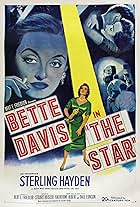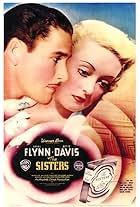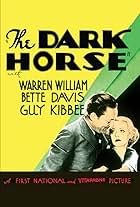IMDb RATING
6.1/10
1.7K
YOUR RATING
A divorced couple's teen-age daughter stands trial for stabbing her mother's latest lover.A divorced couple's teen-age daughter stands trial for stabbing her mother's latest lover.A divorced couple's teen-age daughter stands trial for stabbing her mother's latest lover.
- Nominated for 1 Oscar
- 3 nominations total
Mike Connors
- Major Luke Miller
- (as Michael Connors)
James Bell
- Judge - Divorce Court
- (uncredited)
Nick Borgani
- Card Player
- (uncredited)
Walter Brooke
- Banker
- (uncredited)
- Director
- Writers
- All cast & crew
- Production, box office & more at IMDbPro
Storyline
Did you know
- TriviaAt the last minute, the producers wanted to add a scene where Bette Davis' character goes insane and commits suicide. Davis refused, saying it was out of character for the role.
- GoofsDuring lengthy flashback sequence taking place 20 years earlier, none of the three leading characters look any younger than they do in present-day story set in 1964 nor do their Edith Head designed clothes or hairstyles reflect styles of two decades in the past.
- Quotes
Valerie Hayden Miller: When you're dying from thirst, you'll drink from a mudhole.
- ConnectionsEdited into The Green Fog (2017)
Featured review
On April 4, 1958, Lana Turner's daughter, Cheryl Crane, stabbed Turner's boyfriend, underworld figure Johnny Stompanato, to death, in what was later deemed a justifiable homicide. This scandalous incident served as the inspiration for Harold Robbins' 1962 novel "Where Love Has Gone," his follow-up to "The Carpetbaggers." And this tawdry novel was given the A-list treatment by Paramount two years later, in a film that was critically lambasted but commercially successful. The picture featured the cream of Hollywood talent both in front of and behind the camera, but turned out to be a highly melodramatic affair, replete with florid dialogue and soap operalike qualities. But is it fun to watch today, almost five decades later? Oh, yes, indeed!
The film cleaves into two fairly discrete sections. In the first, we meet Luke Miller, an aspiring architect (played by Mike Connors) whose daughter, Danni, has just killed his ex-wife's lover in San Francisco. (Fifteen-year-old Danni, it should be mentioned, is played by future sex symbol Joey Heatherton, 20 here and almost unrecognizable as a redhead.) In flashback, we see how Luke first met Danni's mom, a sculptress and artist named Valerie Hayden (Susan Hayward), daughter of society matron Mrs. Gerald Hayden (Bette Davis, despite the fact that Bette was only 10 years older than Susan), and how their marriage soon dissolved due to alcoholism and infidelity. In the film's second half, we are witness to Danni's juvenile hearing and see the aftermath of the murder, including a short sojourn in blackmailing territory.
"Where Love Has Gone" features some beautiful sets and makes excellent use of its S.F. locales. It also features a catchy Sammy Cahn/James van Heusen theme song, warbled by Jack Jones, and eye-catching costumes by famed designer Edith Head. Edward Dmytryk's direction (he had previously worked with Susan on 1955's "Soldier of Fortune," though never before with Bette, and had just directed the film adaptation of "The Carpetbaggers") is typically expert, and the supporting cast (including DeForest Kelley as a cynical art critic, here two years pre-"Trek"; the always hissable George Macready; Jane Greer, who had appeared with Susan in 1947's "They Won't Believe Me"; and Whit Bissell, who seems to have appeared in half the films ever made!) is just fine. But of course, the main selling point of this film has to be the first and only pairing of two of Hollywood's greatest actresses, Bette Davis and Susan Hayward (two of MY personal favorites, at least). These two supposedly didn't get along well on the set (surprise, surprise), but sure do have a cutting and nasty chemistry on screen! Susan's final courtroom speech may be the film's finest moment, thespianwise, although Mike Connors, here three years prior to beginning his eight-year run as TV's Mannix, provides the film with its most ingratiating performance. In short, "Where Love Has Gone" is certainly nobody's idea of a great film, much less "high art," but yes, it sure is fun to watch. And really, where else are you going to see the "Brooklyn Bombshell," Susan Hayward, handle a blowtorch?
The film cleaves into two fairly discrete sections. In the first, we meet Luke Miller, an aspiring architect (played by Mike Connors) whose daughter, Danni, has just killed his ex-wife's lover in San Francisco. (Fifteen-year-old Danni, it should be mentioned, is played by future sex symbol Joey Heatherton, 20 here and almost unrecognizable as a redhead.) In flashback, we see how Luke first met Danni's mom, a sculptress and artist named Valerie Hayden (Susan Hayward), daughter of society matron Mrs. Gerald Hayden (Bette Davis, despite the fact that Bette was only 10 years older than Susan), and how their marriage soon dissolved due to alcoholism and infidelity. In the film's second half, we are witness to Danni's juvenile hearing and see the aftermath of the murder, including a short sojourn in blackmailing territory.
"Where Love Has Gone" features some beautiful sets and makes excellent use of its S.F. locales. It also features a catchy Sammy Cahn/James van Heusen theme song, warbled by Jack Jones, and eye-catching costumes by famed designer Edith Head. Edward Dmytryk's direction (he had previously worked with Susan on 1955's "Soldier of Fortune," though never before with Bette, and had just directed the film adaptation of "The Carpetbaggers") is typically expert, and the supporting cast (including DeForest Kelley as a cynical art critic, here two years pre-"Trek"; the always hissable George Macready; Jane Greer, who had appeared with Susan in 1947's "They Won't Believe Me"; and Whit Bissell, who seems to have appeared in half the films ever made!) is just fine. But of course, the main selling point of this film has to be the first and only pairing of two of Hollywood's greatest actresses, Bette Davis and Susan Hayward (two of MY personal favorites, at least). These two supposedly didn't get along well on the set (surprise, surprise), but sure do have a cutting and nasty chemistry on screen! Susan's final courtroom speech may be the film's finest moment, thespianwise, although Mike Connors, here three years prior to beginning his eight-year run as TV's Mannix, provides the film with its most ingratiating performance. In short, "Where Love Has Gone" is certainly nobody's idea of a great film, much less "high art," but yes, it sure is fun to watch. And really, where else are you going to see the "Brooklyn Bombshell," Susan Hayward, handle a blowtorch?
- How long is Where Love Has Gone?Powered by Alexa
Details
- Release date
- Country of origin
- Language
- Also known as
- Wohin die Liebe führt
- Filming locations
- Production companies
- See more company credits at IMDbPro
- Runtime1 hour 54 minutes
- Aspect ratio
- 2.35 : 1
Contribute to this page
Suggest an edit or add missing content











